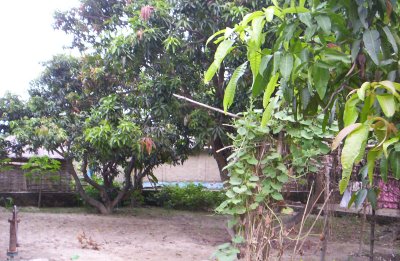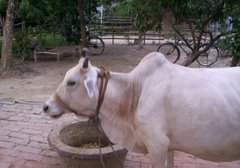Significance of the Sacred Thread
Yajnopavita or the sacred thread is worn by the Brahmins, Kshatriyas and the Vaisyas. Wearing the sacred thread is a very holy and sacred ceremony amongst the Hindus. Brahmin boys between the ages of five and eight are invested with the sacred thread on a very auspicious day. By this ceremony, they become fit for the repetition of Gayatri. A Brahmin becomes a true Brahmin only after this ceremony.
It is said: - Janmana Jayate Sudrah Karmana Jayate Dvijah - By birth one is a Sudra; by Karma (i.e., the investiture with the sacred thread) he becomes a Dvija or Brahmin. - Upanayana or thread ceremony is the second birth; hence, the Brahmins are called Dvijas (Dvija means born twice).
The sacred thread or Yajnopavita consists of three threads. It denotes that one should be a Brahmachari in thought, word and deed. Each thread represents a Veda, viz., the Rik, Yajus and Sama. It represents also Brahma, Vishnu and Siva. The knot in the middle represents the formless Brahman, the Supreme Principle. The three threads represent also Sattva, Rajas and Tamas of the Trigunatmika Maya, and the knot represents the Isvara who controls Maya. Those who worship God at the three Sandhyas and repeat the Gayatri holding the Brahma knot of the sacred thread, derive immense strength and power. In days of yore, a Brahmana meditating upon the Gayatri holding the Brahma knot, had the power to bless and curse others. The educated intelligentsia of the present day are quite ignorant of the power of the sacred thread and the performance of Sandhya. That is the reason why they have ignored it. The sacred thread is a great power for the Brahmin who leads a regulated life devoted to the worship of God. Kshatriyas and Vaisyas, too, acquire power, fame and wealth by the power of the sacred thread.
A householder wears, at the time of marriage, an additional sacred thread. A Brahmachari has only one. The additional thread at the time of marriage is intended for the well-being of the partner. The sacred thread should be on the body always. The custom of washing it after removing it from the body or sending it to the washerman, is a wrong procedure. Some people are ashamed to wear the thread when they go to the office and they leave it at home. How ignorant they are!
Yajnopavita, the Choti, caste-mark, etc., are the external symbols to show that one is a Hindu. Purity, self-restraint, non-violence, patience, love for ones fellow-beings - these are the internal marks of a Hindu.



















